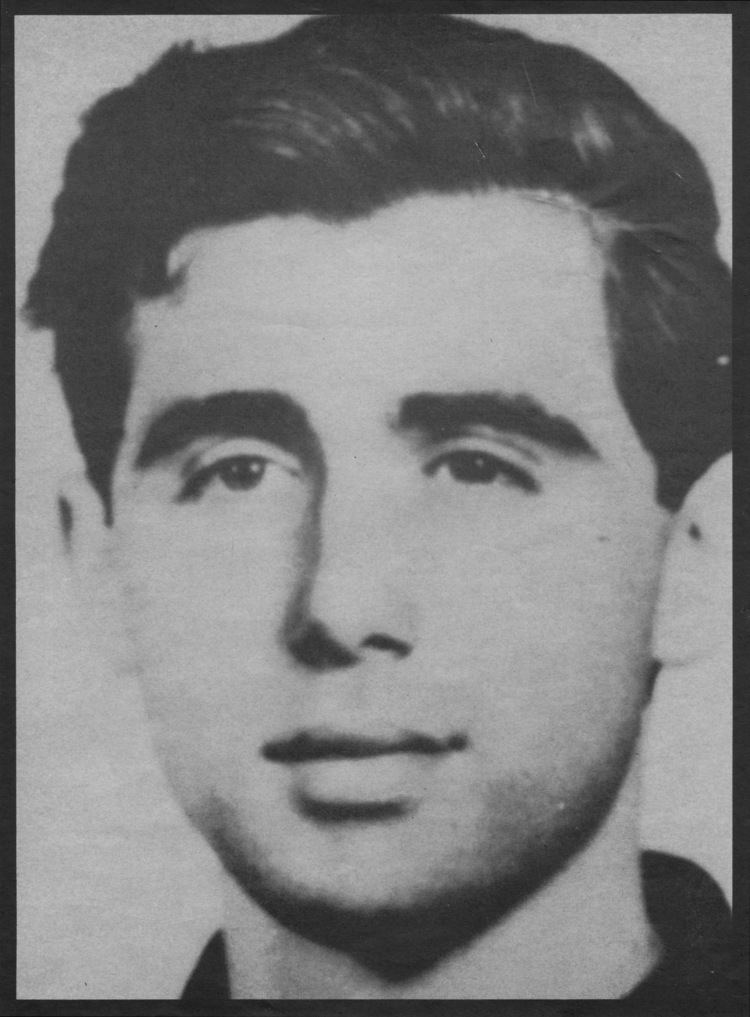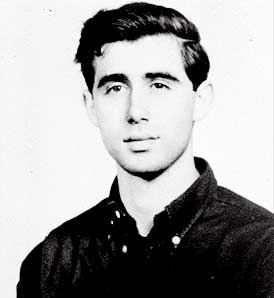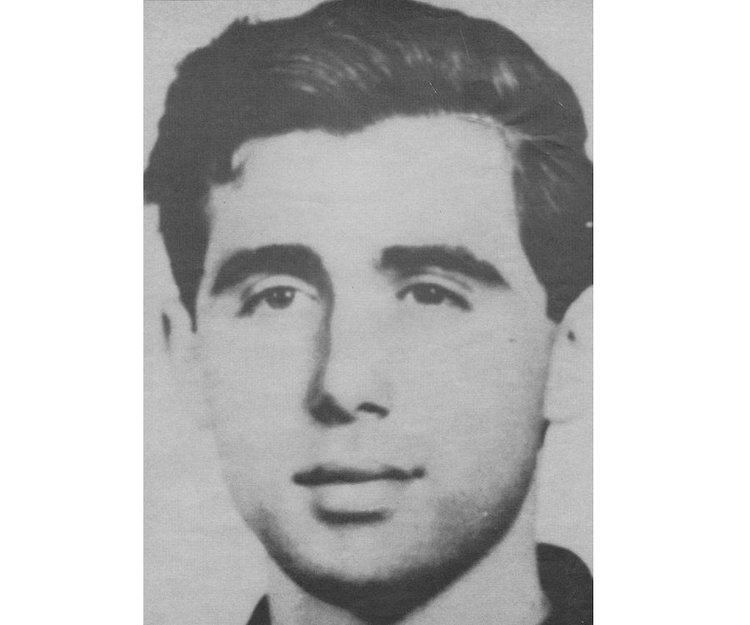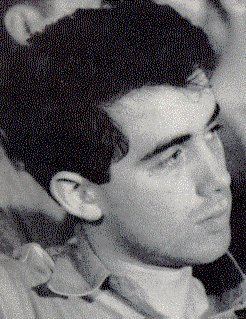Full Name Andrew Goodman Cause of death Murder | Ethnicity Jewish Name Andrew Goodman | |
 | ||
Born November 23, 1943 ( 1943-11-23 ) New York City Died June 21, 1964(1964-06-21) (aged 20)Mississippi, U.S. Assassinated June 21, 1964, Philadelphia, Mississippi, United States Education Queens College, City University of New York Books Gilbert and Sullivan at Law Similar People Michael Schwerner, James Chaney, Fannie Lou Hamer, Viola Liuzzo, James Farmer | ||
Introduction to the andrew goodman foundation
Andrew Goodman (November 23, 1943 – June 21, 1964) was one of three American activists of the Civil Rights Movement and also a Social Worker, murdered near Philadelphia, Mississippi, during Freedom Summer in 1964 by members of the Ku Klux Klan.
Contents
- Introduction to the andrew goodman foundation
- Remembering the Mississippi Burning murders
- Early life and education
- Civil rights activism
- Arrest release and murder
- Investigation and trial
- Reinvestigation
- Legacy and honors
- Goodman
- References

Remembering the "Mississippi Burning" murders
Early life and education

Andrew Goodman was born and raised in the Upper West Side of New York City, at 161 West 86 Street. He was the second of three boys born of Robert and Carolyn Goodman, and, like fellow murdered activist Michael Schwerner, was of Jewish heritage. His family and community were steeped in intellectual and socially progressive activism and were devoted to social justice. An activist at an early age, Goodman graduated from the progressive Walden School, which was said to have had a strongly formative influence on his outlook. He attended the Honors Program at the University of Wisconsin–Madison for a semester but withdrew after falling ill with pneumonia.

Goodman then enrolled at Queens College, New York City, where he was a friend and classmate of Paul Simon. With Goodman's brief experience as an Off-Broadway actor, he originally planned to study drama but switched to anthropology. Goodman's growing interest in anthropology seemed to parallel his increasing political seriousness.
Civil rights activism

In 1964, Goodman volunteered along with fellow activists Mickey Schwerner, his wife Rita Schwerner Bender, and James Chaney to work on the "Freedom Summer" project of the Congress of Racial Equality (CORE) to register blacks to vote in Mississippi. Having protested U.S. President Lyndon Johnson's presence at the opening of that year's World's Fair, Goodman left New York to train and develop civil rights strategies at Western College for Women (now part of Miami University) in Oxford, Ohio. In mid-June, Goodman joined Schwerner in Meridian, Mississippi, where the latter was designated head of the field office. They worked on registering blacks in rural areas to vote.

The Mississippi State Sovereignty Commission was strongly opposed to integration and civil rights. It paid spies to identify citizens suspected of activism, especially northerners who entered the state. The records opened by court order in 1998 also revealed the state's deep complicity in the murders of Chaney, Goodman, and Schwerner, because its investigator A.L. Hopkins passed on to the Commission information about the workers, including the car license number of a new civil rights worker. Records showed the Commission, in turn, passed on the information to the Neshoba County Sheriff, who was implicated in the murders.

Schwerner had been working closely with an assistant James Chaney, also a civil rights activist in Meridian. On the morning of June 21, 1964, the three men set out for Philadelphia, Neshoba County, where they were to investigate the recent burning of Mount Zion Methodist Church, a black church that had agreed to be a site for a religious school for education and voter registration.
Arrest, release and murder
On their return to Meridian, the three men were stopped and arrested by Deputy Sheriff Cecil Price (a Klan member) for allegedly driving 35 miles over the 30-mile-per-hour speed limit. The trio were taken to the jail in Neshoba County where Chaney was booked for speeding, while Schwerner and Goodman were booked "for investigation". After Chaney was fined $20, the three men were released and told to leave the county. Price followed them in his patrol car. At 10:25, Price sped to catch up with the station wagon before it crossed the border into the relative safety of Lauderdale County. Price ordered the three out of their car and into his. He then drove them to a deserted area on Rock Cut Road while being followed by two cars filled with other Klansmen. He then turned them over to the Klansmen who beat Chaney and then shot and killed Schwerner, Goodman, and Chaney.
Investigation and trial
The FBI entered the case after the men disappeared. They helped find them buried in an earthen dam. The US government prosecuted the case under the Enforcement Act of 1870. The Neshoba County deputy sheriff and six conspirators were convicted by Federal prosecutors of civil rights violations but were not convicted of murder. Two defendants were acquitted because the jury deadlocked.
Reinvestigation
Journalist Jerry Mitchell, an award-winning investigative reporter for the Jackson Clarion-Ledger, had written extensively about the case for many years. Mitchell, who had already earned fame for helping secure convictions in several other high-profile civil rights era murder cases, including the assassination of Medgar Evers, the Birmingham, Alabama 16th Street Baptist Church bombing, and the murder of Vernon Dahmer in Mississippi, developed new evidence, found new witnesses and pressured the state to take action. Barry Bradford, an Illinois high-school teacher later famous for helping clear the name of civil rights martyr Clyde Kennard, and three students, Allison Nichols, Sarah Siegel, and Brittany Saltiel, joined Mitchell's efforts.
Bradford and his students’ documentary, produced for the National History Day contest, presented important new evidence and compelling reasons for reopening the Goodman, Chaney, and Schwerner case. They also obtained an interview with Edgar Ray Killen, which helped persuade the state to open the case for investigation. Mitchell was able to determine the identity of "Mr. X", the mystery informer who had helped the FBI discover the bodies and smash the conspiracy of the Klan in 1964, in part using evidence developed by Bradford and the students.
On 14 September 2004, Mississippi State Attorney General Jim Hood announced that he was gathering evidence for a charge of murder and intended to take the case to a grand jury. On 7 January 2005, Edgar Ray Killen was arrested. He was found guilty of three counts of manslaughter — not murder — on June 21, 2005, exactly 41 years to the day after the murders. He was sentenced to sixty years in prison—twenty years for each count, to be served consecutively.
On June 20, 2016, just one day ahead of the 52nd anniversary of the murders, Attorney General Hood announced an end to the federal and state investigations into the 'Mississippi Murders', officially closing the case.
Legacy and honors
In 1966, Andrew’s parents, Robert and Carolyn Goodman started The Andrew Goodman Foundation to carry on the spirit and purpose of their son’s life. After the death of Robert Goodman in 1969, Carolyn continued the work of the Foundation, focusing on projects like a reverse march to Mississippi and a 25th Anniversary Memorial. The memorial, which took place at St. John The Divine Church in NYC, was attended by 10,000 people and was presided by Governor Mario Cuomo, Maya Angelou, Peter Seeger, Aaron Henry, Harry Belafonte, Robert Kennedy Jr., and others closely associated with the Civil Rights movement. After Carolyn’s death in August 2007, David Goodman, Andrew’s younger brother, and Sylvia Golbin Goodman, David’s wife, took up the work of the Foundation.
For nearly 50 years, the organization was a private foundation acting in the public interest. With their eyes set on the future, the Board of Trustees of The Andrew Goodman Foundation elected to turn the organization into a public charity in 2012. In 2014, on the fiftieth anniversary of the murders, the Foundation officially launched Vote Everywhere, a program designed to support college students who are continuing the work of Freedom Summer.
